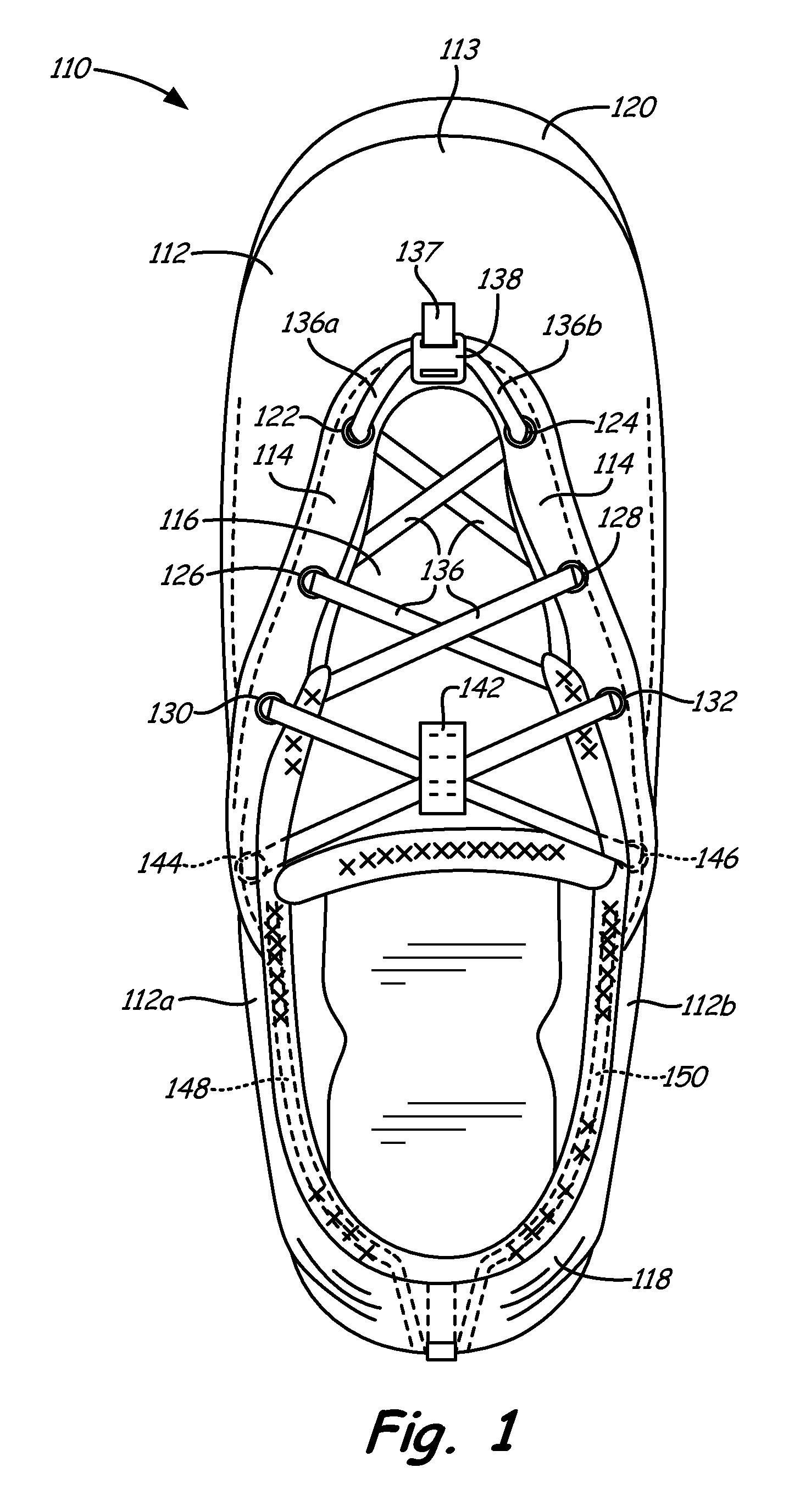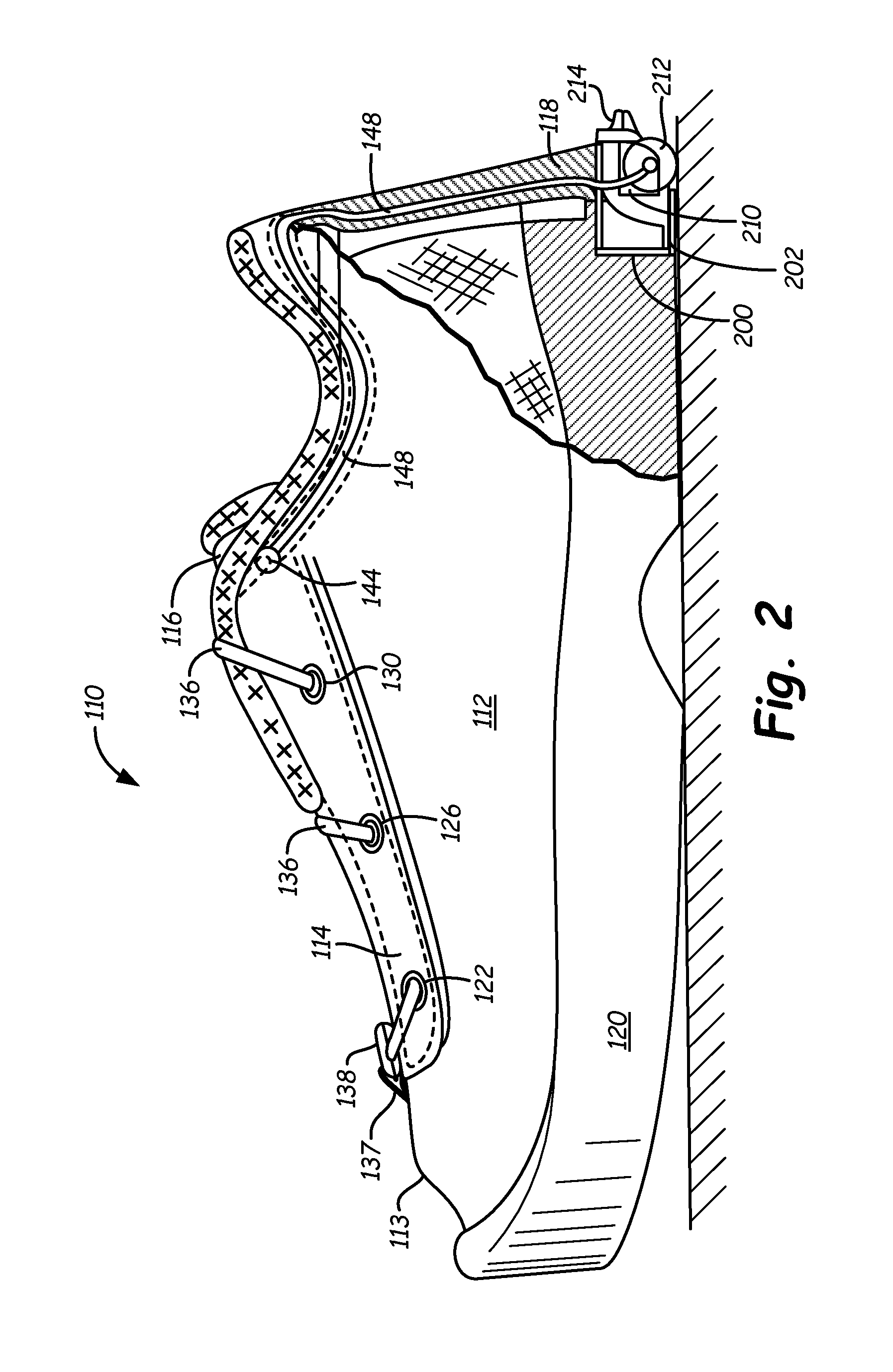Automated tightening shoe
a shoe and automatic technology, applied in the field of shoes, can solve the problems of pain or unduly difficult pulling shoe laces tight and knotting, affecting the normal wearer, so as to achieve convenient replacement, easy loosing, and easy loosing
- Summary
- Abstract
- Description
- Claims
- Application Information
AI Technical Summary
Benefits of technology
Problems solved by technology
Method used
Image
Examples
embodiment 233
[0071]FIGS. 13-15 show an alternative embodiment 233 of first end shaft 232 or second end shaft 234. It is similar in design and construction to the end shaft depicted in FIGS. 7, 8, and 11 with the exception of an additional containment disk wall 288 molded between inner cylindrical shoulder 264 and outer cylindrical boss 266. This containment disk wall has a diameter that is larger than the diameter of the inner cylindrical shoulder. In this manner, containment disk wall 288 and disk portion 260 of end shaft 233 cooperate to define a region 289 for winding and unwinding lace 136 or engagement cable 196, while the containment disk wall 288 prevents undue lateral migration of the lace 136 or engagement cable 196. This helps to prevent the lace or engagement cable from getting tangled in the axle assembly 224, and impeding its rotational movement.
[0072]FIG. 9 shows actuator wheel 212 secured to wheel shaft 230. Actuator wheel 212, as shown more clearly in FIG. 8, contains a channel 2...
embodiment 210
[0091]The automated tightening mechanism 210 of the present invention is simpler in design than other devices known within the industry. Thus, there are fewer parts to assemble during shoe manufacture and to break down during usage of the shoe. Another substantial advantage of the automated tightening mechanism embodiment 210 of the present invention is that shoe lace 136 and their associated guide tubes may be threaded down the heel portion of the shoe upper, instead of diagonally through the medial and lateral uppers. This feature greatly simplifies manufacture of shoe 110. Moreover, by locating automated tightening mechanism 210 closer to the heel within shoe sole 120, a smaller housing chamber 200 may be used, and the unit may more easily be inserted and glued into a smaller recess within the shoe sole during manufacture.
[0092]Another significant advantage of the automated tightening mechanism 210 of the present invention is the fact that a single shoe lace 136 is used to tighte...
case 502
[0117]Forward case 502 as shown in FIGS. 22 and 27 is preferably molded from 301 polycarbonate glass fiber 10% or functionally equivalent material. It has an outer surface wall 600 and base wall 602. This base wall 602 should be flat so that it provides an ideal way to fasten the housing assembly 502 and 504 containing the automated tightening mechanism 500 to the chamber bottom 202, such as by means of adhesive. This housing contains the various parts of the automated tightening mechanism while allowing entry and exit of the shoe lace 510, rotation of the axle assembly 506 in both the tightening and loosening direction, and external operation of the actuator wheel 508 and release lever 512 extending therefrom.
[0118]FIG. 27 shows the interior of forward ease 502. It features cut-away portion 604 for accommodating actuator wheel 508. Actuator wheel 508 must be capable of rotating freely without rubbing against forward case 502. Interior walls 606 and 608 containing shoulders 610 and ...
PUM
 Login to View More
Login to View More Abstract
Description
Claims
Application Information
 Login to View More
Login to View More - R&D
- Intellectual Property
- Life Sciences
- Materials
- Tech Scout
- Unparalleled Data Quality
- Higher Quality Content
- 60% Fewer Hallucinations
Browse by: Latest US Patents, China's latest patents, Technical Efficacy Thesaurus, Application Domain, Technology Topic, Popular Technical Reports.
© 2025 PatSnap. All rights reserved.Legal|Privacy policy|Modern Slavery Act Transparency Statement|Sitemap|About US| Contact US: help@patsnap.com



